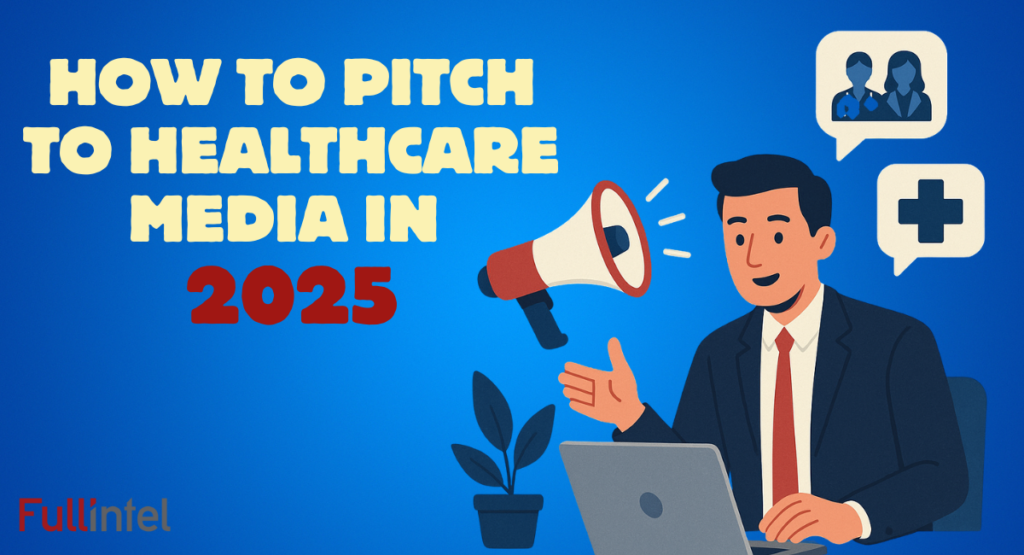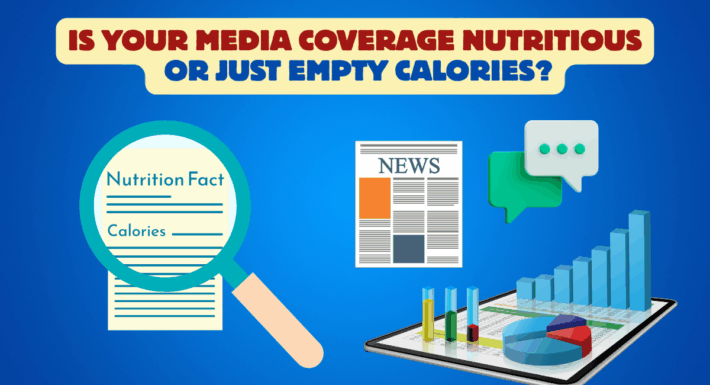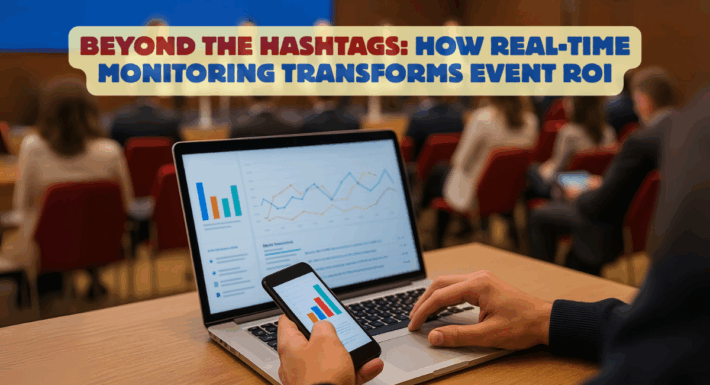How to Pitch to Healthcare Media in 2025: Winning Strategies for Successful Coverage

The Evolving Healthcare Media Landscape
What’s the best way to get a busy healthcare reporter’s attention in 2025? What topics interest biopharma journalists most this year? How can you ensure your healthcare pitch stands out in an increasingly competitive digital environment?
As the healthcare industry continues to evolve rapidly, so do the strategies for effectively communicating with journalists and securing valuable media coverage. With healthcare spending projected to reach $13.31 trillion globally in 2025 and the healthcare/pharma advertising market approaching $44.56 billion, the competition for media attention has never been fiercer.
This updated guide provides fresh insights into what healthcare journalists want from PR professionals and how to craft pitches that resonate in today’s media environment.
Healthcare journalists expect pitches that demonstrate awareness of current industry dynamics. Staying updated on the latest pharmaceutical industry developments helps you frame your story within the broader context of regulatory changes, technological advances, and market trends that reporters are already covering.
What Healthcare Journalists Want in 2025
Healthcare journalists across multiple publications consistently highlight several key elements they look for in pitches:
1. Connect to Broader Healthcare Trends
Journalists want stories that connect to larger industry narratives and have implications beyond a single company or product. Emily Mullin, staff writer at WIRED, noted during a recent panel that she is looking for “bigger trends in biotech – interesting innovative companies – that resonate with a broader tech audience.”
2. Focus on Future Impact, Not Past Achievements
Healthcare media are primarily interested in what’s coming next. As Allison DeAngelis from STAT emphasized, “In most cases, I want to be talking about the future rather than the past.” This forward-looking approach means your pitch should clearly articulate potential future impact rather than just celebrating past milestones.
3. Present Complete Clinical Results, Not Early Data
Simply filing an Investigational New Drug (IND) application or having preliminary data isn’t compelling enough for most healthcare journalists in 2025. Wait until you have complete clinical trial results that demonstrate meaningful impact before pitching.
4. Provide High-Quality Visuals
The importance of visual content continues to grow. Always include a variety of high-resolution images with your pitch, and ideally, provide different files for each reporter to ensure unique visual content across publications.
5. Embrace Multimedia Content
In 2025, journalists increasingly expect pitches that include multimedia assets—video clips, infographics, and interactive content. This shift reflects the growing importance of visual and interactive storytelling in healthcare communications.
Hot Healthcare Topics for 2025
Based on current trends and journalist feedback, these topics are likely to generate significant media interest in 2025:
- Gene Therapy and Gene Editing Advancements: CRISPR and beyond
- AI Applications in Healthcare: From diagnostics to drug discovery
- Strategic Healthcare Brand Partnerships: Novel collaborations between tech and healthcare providers
- GLP-1 Medications and Obesity Treatment: Ongoing developments and market impacts
- Synthetic Biology Innovations: New applications and breakthroughs
- Neurotechnology Developments: Brain-computer interfaces and treatments
- Reproductive Technology: New fertility treatments and options
- Bioethics Considerations: Particularly around AI and genetic technologies
- Microbiome Research: New understanding and therapeutic applications
- Healthcare Financing and Restructuring: Business model innovations and funding trends
- Personalized/Precision Medicine: Tailored treatment approaches
- Digital Health and Telehealth Evolution: Post-pandemic adaptation and integration
Effective Healthcare Media Pitching Strategies for 2025
Research Before You Pitch
Most PR professionals understand that establishing relationships with journalists who cover your specific field is crucial. What’s changing in 2025 is the depth of research required before pitching.
“Not knowing what I cover is a major pet peeve,” says Emily Mullin. With journalism becoming increasingly specialized, thoroughly research what topics each journalist typically covers and tailor your pitch accordingly.
Tools like Muck Rack can help you identify the right journalists for your story and understand their preferences. According to recent data, 41% of healthcare reporters consider social media very important to their work (compared to 33% of journalists overall), and 50% plan to increase their LinkedIn presence in 2025.
Before crafting your healthcare media pitch, it’s crucial to understand the current media conversation around your therapeutic area. Many healthcare organizations struggle with fragmented media monitoring across different business units and regions, making it difficult to identify the right opportunities and timing for media outreach.
Successful healthcare pitching requires staying current with regulatory developments, clinical trial outcomes, and industry trends. Effective media monitoring helps PR teams identify emerging opportunities and understand which topics are gaining traction with healthcare journalists before competitors do.
Personalization Is Non-Negotiable
Mass emails are increasingly ineffective in the healthcare space. The most successful pitches in 2025 demonstrate that you understand the journalist’s beat, audience, and previous coverage.
When pitching healthcare journalists:
- Reference their recent articles
- Explain specifically why your story would interest their audience
- Highlight unique angles relevant to their specific publication
- Connect your news to trends they’ve covered previously
Adapt to Platform-Specific Requirements
Understanding the platform where your story might appear is critical in 2025. Each platform—whether print, digital, podcast, or social media—has distinct content preferences and audience expectations.
For example, pitching a story for a healthcare podcast requires different elements than pitching for a traditional news outlet. Consider how your story might be told through various media formats and highlight those aspects in your pitch.
Leverage Data Effectively
Healthcare journalists increasingly value data-driven stories. When pitching:
- Lead with your most compelling statistics
- Make the data easily accessible and understandable
- Explain the significance and implications of the numbers
- Connect data points to human impact whenever possible
Timing Matters More Than Ever
With the 24/7 news cycle accelerating in 2025, timing your pitch appropriately is crucial. Consider:
- Pitching early in the week (Monday/Tuesday) for best results
- Avoiding major industry announcement days
- Connecting to relevant awareness months or healthcare events
- Giving journalists adequate lead time (especially for feature stories)
Major industry conferences like JPM create unique media opportunities for healthcare organizations. As we saw during JPM 2025, where $18B in M&A deals dominated headlines, these events provide natural news hooks for pharmaceutical companies to position their innovations alongside industry trends.
Offer Exclusive Access When Possible
Exclusivity remains a powerful incentive in 2025. Consider offering:
- First access to new research findings
- Exclusive interviews with key healthcare innovators
- Behind-the-scenes looks at healthcare technologies
- Embargoed information for major announcements
Be Concise But Complete
Healthcare journalists receive hundreds of pitches weekly. Make yours stand out by being both concise and comprehensive:
- Keep initial pitches under 200 words
- Use bullet points for key information
- Include all essential details (who, what, when, where, why)
- Provide clear contact information for follow-up
Case Study: The J.P. Morgan Healthcare Conference Approach
The J.P. Morgan Healthcare Conference remains the industry’s largest healthcare investment symposium, connecting global industry leaders with innovative technologies, emerging companies, and healthcare investors.
The conference exemplifies effective healthcare media engagement by:
- Hosting pre-conference events featuring journalist panels
- Providing targeted information addressing specific journalist interests
- Creating networking opportunities between healthcare communicators and media
- Offering exclusive access to industry leaders and innovators
This approach creates a collaborative environment where meaningful healthcare stories can emerge, benefiting both journalists and healthcare organizations.
The Power of Authentic Storytelling
Perhaps the most significant shift in healthcare media pitching for 2025 is the growing emphasis on authentic storytelling. Healthcare journalists increasingly seek stories that:
- Feature real patient experiences and outcomes
- Demonstrate tangible impact on healthcare delivery or patient care
- Highlight the human elements behind healthcare innovations
- Address genuine unmet medical needs
As Tara Bannow notes in a recent Muck Rack interview, “Try to emphasize why this service/event/venture is new and different and what specific expertise your source has.”
Conclusion
Successful healthcare media pitching in 2025 requires a strategic blend of personalization, timeliness, multimedia content, and authentic storytelling. By understanding what journalists need and adapting your approach to the evolving media landscape, you can significantly increase your chances of securing valuable coverage.
Remember that the most successful healthcare PR professionals build relationships with journalists based on mutual benefit: you provide valuable, newsworthy information, and journalists gain access to stories their audiences care about.
Building lasting relationships with healthcare media requires consistent engagement and deep industry knowledge. Implementing comprehensive media monitoring helps you identify follow-up opportunities, track the success of your pitches, and continuously refine your approach based on what resonates with healthcare journalists.
Angela is VP of Insights at Fullintel—a media intelligence company that specializes in news monitoring and analysis. She has worked in media measurement for 15 years, helping brands improve business results through data-driven, actionable insights. From public relations agencies like Lippe Taylor to media research firms like PRIME Research, she has consulted across industries, particularly healthcare and pharmaceuticals. She has presented and published several award-winning research papers about news content that drives recall, engagement, and brand trust. Her “Trust in Pharma” research outlines how biopharma brands can build and sustain trust.
She contributes knowledge at the intersection of academia and practice as director of the International Public Relations Measurement Commission and as a member of the International Public Relations Research Conference Board. Her contributions have been recognized with multiple industry awards, including PRNEWS People of the Year (Data & Measurement Game Changer), PRNEWS Top Women (Industry Champions), and AMEC Rising Star for innovation in communication measurement.




